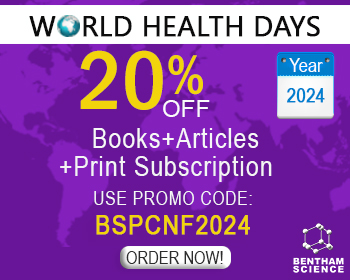Abstract
Background: HIV infection is a chronic disease for which therapeutic adherence and tolerance require particular attention.
Objective: This study aimed to assess whether and when therapeutic drug monitoring (TDM) could be associated with a benefit in routine practice.
Methods: All HIV-infected patients who underwent at least one TDM at the University Hospital of Dijon (France) between 1st January 2009 and 31st December 2012 were retrospectively included. Compliance with the recommendations, the results (antiretroviral concentrations), any subsequent therapeutic modifications, and the virological results at 4-8 months were analysed each time TDM was performed. TDM was defined as “practically relevant” when low or high antiretroviral concentrations led to a change in therapy.
Results: Of the 571 patients who followed-up, 43.4% underwent TDM. TDM complying with recommendations (120 patients) was associated with a higher proportion of antiretroviral concentrations outside the therapeutic range (p=0.03). Antiretroviral treatment was modified after TDM in 22.6% of patients. Protease inhibitors, non-nucleoside reverse transcriptase inhibitors and raltegravir were more significantly modified when the measured concentration was outside the therapeutic range (p=0.008, p=0.05 and p=0.02, respectively). Overall, 11.7% of TDM was considered “practically relevant”, though there was no significant correlation between subsequent changes in antiretroviral treatment and undetectable final HIV viral load.
Conclusion: TDM may be a useful tool in the management of HIV infection in specific situations, but the overall benefit seems moderate in routine practice. TDM cannot be systematic and/or a decision tool per se, but should be included in a comprehensive approach in certain clinical situations.
Keywords: Therapeutic drug monitoring, routine, benefit, antiretroviral, HIV, guidelines.
[http://dx.doi.org/10.1056/NEJM199803263381301] [PMID: 9516219]
[PMID: 25654607]
[http://dx.doi.org/10.1111/j.1365-3156.2011.02924.x] [PMID: 22943380]
[http://dx.doi.org/10.1007/s10461-019-02563-z] [PMID: 31228026]
[http://dx.doi.org/10.1186/s12889-019-7051-3] [PMID: 31182074]
[http://dx.doi.org/10.1186/1471-2458-14-875] [PMID: 25155293]
[http://dx.doi.org/10.1007/s40121-018-0201-6] [PMID: 29761330]
[http://dx.doi.org/10.1016/S2352-3018(16)30091-1] [PMID: 27658869]
[PMID: 29327520]
[http://dx.doi.org/10.1097/MD.0000000000003361] [PMID: 27082595]
[http://dx.doi.org/10.1089/08892220260190290] [PMID: 12201904]
[http://dx.doi.org/10.1517/14740338.2013.806480] [PMID: 23730950]
[http://dx.doi.org/10.3904/kjim.2009.24.1.1] [PMID: 19270474]
[http://dx.doi.org/10.1086/501458] [PMID: 16575741]
[http://dx.doi.org/10.1097/00002030-200203080-00006] [PMID: 11872998]
[http://dx.doi.org/10.1111/hiv.12426] [PMID: 27568911]
[http://dx.doi.org/10.1080/17512433.2016.1235972] [PMID: 27626677]
[http://dx.doi.org/10.1097/COH.0b013e3282f82c1b] [PMID: 19372977]
[http://dx.doi.org/10.2165/11318110-000000000-00000] [PMID: 20000887]
[http://dx.doi.org/10.1128/AAC.01747-10] [PMID: 21709075]
[http://dx.doi.org/10.1517/14740331003767395] [PMID: 20350281]
[http://dx.doi.org/10.7448/IAS.16.1.18567] [PMID: 24008177]
[http://dx.doi.org/10.1093/jac/dkh029] [PMID: 14657084]
[http://dx.doi.org/10.1086/313852] [PMID: 10860900]
[PMID: 19209283]
[http://dx.doi.org/10.3851/IMP1742] [PMID: 21447868]
[http://dx.doi.org/10.2515/therapie/2011033] [PMID: 21819803]
[http://dx.doi.org/10.2515/therapie/2011030] [PMID: 21819802]
[http://dx.doi.org/10.4102/sajhivmed.v17i1.458] [PMID: 29568614]
[http://dx.doi.org/10.1186/s40780-016-0056-5] [PMID: 27688900]
[http://dx.doi.org/10.1186/1742-6405-11-35] [PMID: 25745499]
[http://dx.doi.org/10.1007/s00228-014-1712-z] [PMID: 24958564]
[http://dx.doi.org/10.1097/FTD.0b013e3182791f8c] [PMID: 23188184]
[http://dx.doi.org/10.1111/j.1468-1293.2004.00234.x] [PMID: 15369510]
[http://dx.doi.org/10.1007/s15010-011-0183-8] [PMID: 21866336]
[http://dx.doi.org/10.1111/j.1468-1293.2005.00321.x] [PMID: 16156885]
[http://dx.doi.org/10.1093/infdis/jit411] [PMID: 23943851]
[http://dx.doi.org/10.1186/1471-2334-9-81] [PMID: 19493344]
[http://dx.doi.org/10.1097/00007691-200306000-00018] [PMID: 12766566]
[http://dx.doi.org/10.7448/IAS.17.4.19695] [PMID: 25397445]
[http://dx.doi.org/10.1007/s40262-012-0002-0] [PMID: 23018528]
[http://dx.doi.org/10.1097/FTD.0b013e31803bb54e] [PMID: 17417070]
[http://dx.doi.org/10.1097/00002030-200305230-00007] [PMID: 12819517]
[http://dx.doi.org/10.1097/QAD.0b013e32831f9148] [PMID: 19114860]
[http://dx.doi.org/10.1310/hct1204-201] [PMID: 22044856]






























